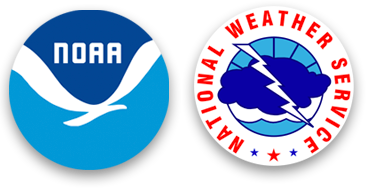One of Four: Hurricane Camille - National Weather Service Heritage
.jpg)
One of Four: Hurricane Camille
By Emily Senesac (emily.senesac@noaa.gov)Only four hurricanes have ever made landfall on the continental United States as a Category 5 hurricane on the Saffir Simpson Hurricane Wind Scale. The first occurred on Labor Day in 1935, decimating the Florida Keys with top wind speeds of more than 180 miles per hour. More than 50 years later, Hurricane Andrew, one of the costliest natural disasters in history, made landfall in South Florida and later Louisiana in August, 1992. In the fall of 2018, the late-season Hurricane Michael swept through the southeast with a landfall in the Florida panhandle.
The fourth Category 5 to strike the contiguous United States occurred in 1969. After forming off the west coast of the Cayman Islands on August 14, Hurricane Camille quickly gained strength as it moved northward. By the time it made landfall along the Mississippi Gulf Coast on August 17, Camille had evolved into a Category 5 storm. Ranked as the second most intense hurricane to strike the U.S., Camille averaged landfall and coastal wind intensity of 150 knots, or 175 miles per hour, with a devastating storm surge of about 25 feet. However, the maximum sustained winds of Camille remain unknown -- the powerful winds destroyed all wind-recording instruments in the landfall area.
The impacts of Hurricane Camille were felt across much of the southeast U.S., especially southeast Mississippi and southwest Alabama. Most of the inland damage was a result of fallen trees and power lines, while damage on the immediate coast was caused by both wind and storm surge. Communities saw homes and buildings damaged or destroyed, fallen trees, and flooded roads. Additionally, crops in Mississippi and Alabama took an enormous hit -- peach and pecan orchards were completely destroyed, and more than 20,000 acres of corn were flattened. The majority of the crop damage -- about 90% -- was due to the high winds while just 10% is attributed to the intense rainfall.
After wreaking havoc on the Gulf Coast, Camille moved northward to Tennessee and into Kentucky, weakening to a tropical depression along the way before turning east to Virginia. While the heaviest rainfall in Mississippi and Alabama measured about 10 inches, Camille, as a tropical depression while moving eastward over Virginia, produced rainfall amounts of 1-2 feet, with local amounts of more than 30 inches. Most of this rain occurred during a period of 3-5 hours, causing catastrophic flash flooding throughout the Appalachians. The rainfall led to the most severe flooding the James River and its tributaries had seen in more than a century, and produced devastating landslides that washed away homes, roads, bridges, and railroads.
The rainfall, winds, and storm surge from Camille caused 256 deaths across several states -- 143 were on the Gulf Coast, and another 113 were a direct result of the Virginia floods. All told, the damage caused by Camille totaled approximately $1.4 billion dollars (about $10 billion in 2020 adjusted for inflation).
For 36 years, Hurricane Camille held the record as the most devastating hurricane to strike the Gulf Coast. Though not a Category 5 hurricane at the time of landfall, Hurricane Katrina became one of the costliest and most deadly storms to affect the area when it struck in August 2005.
For more than 150 years, the NWS has been dedicated to warning and preparing our country for the impact of hazardous weather events. Though technology and communications continue to improve, it is important to stay vigilant and aware of incoming weather hazards.
Resources and Additional Reading
- Hurricane Camille: A Report to the Administrator (1969), Environmental Science Services Administration - https://www.weather.gov/media/publications/assessments/Hurricane%20Camille.pdf
- Preliminary Report: Hurricane Camille August 14, 22, (1969) - https://www.nhc.noaa.gov/pdf/TCR-1969Camille.pdf
- NWS Mobile-Pensacola Hurricane Camille web page (with link to other technical papers and other information - https://www.weather.gov/mob/camille
- Interactive Map of Hurricane Camille - https://www.coast.noaa.gov/hurricanes/index.html#map=3.56/31.46/-72.05
